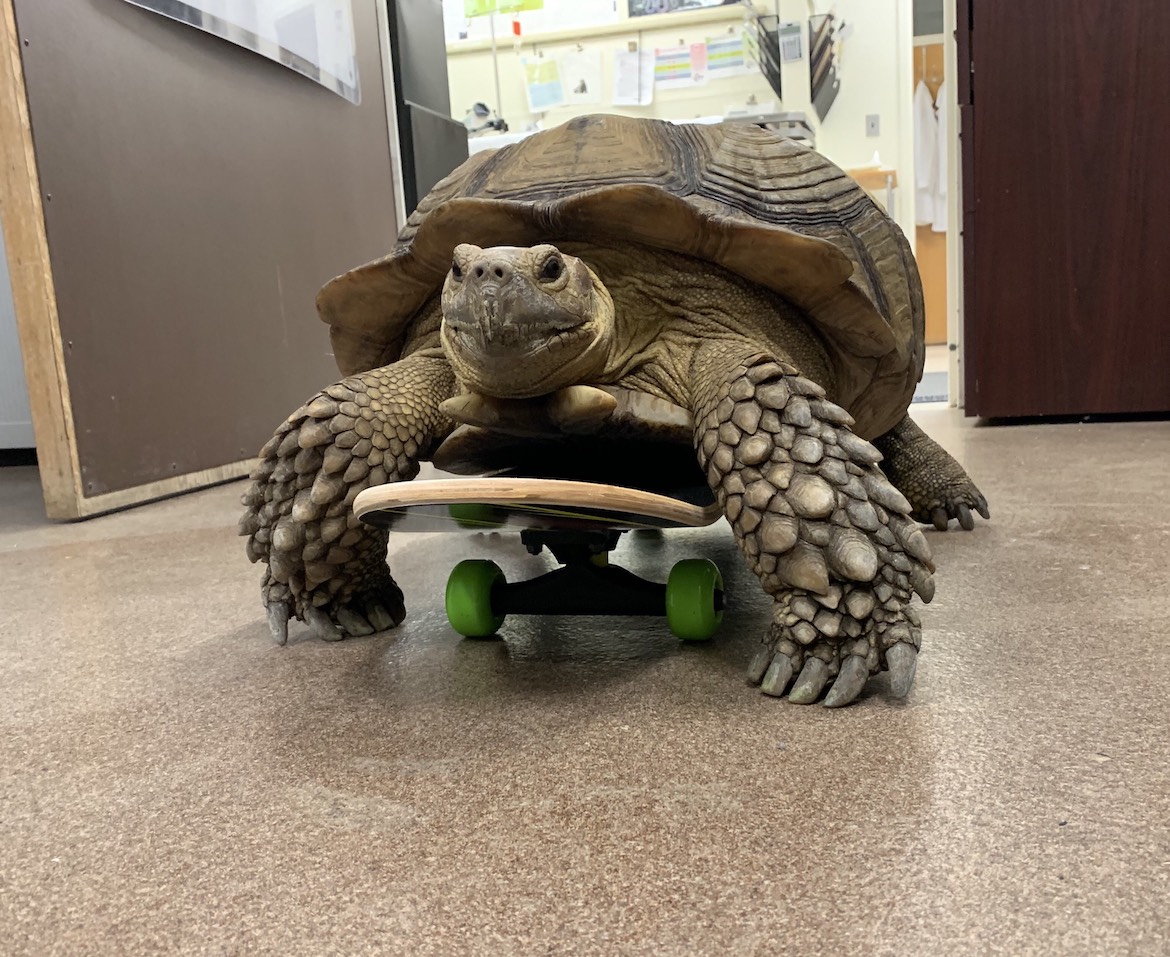
OSU veterinarians tackle tortoise’s troubles
Wednesday, September 11, 2019
(STILLWATER, Oklahoma, Sept. 11, 2019) — Oklahoma State University veterinarians embrace unique patients and complex cases. At the Boren Veterinary Medical Hospital, they recently took on another — a paralyzed 70-pound Sulcata tortoise named Radar.
In late August, Radar arrived at Oliver and Friends Farm Animal Sanctuary in Luther, Oklahoma, through Tortoise Rescue Oklahoma. Suffering from shell damage and mysterious paralysis, Radar was taken to the Boren Veterinary Medical Hospital in Stillwater, where OSU veterinarians began running tests.
Dr. Nicola Di Girolamo, associate professor and board-certified avian, exotic and zoo medicine veterinarian, said Radar’s paralysis could be caused by a neurological problem — his spinal cord not properly sending signals to his legs and abdomen.
“We’ve had other cases like this in the past, but we have never been able to make a final diagnosis because we have never been able to do a magnetic resonance imaging on such a big tortoise, and we have never been able to collect fluids from the spine,” Di Girolamo said. “Radar is very special because we were able to do all these diagnostics.”
Oliver and Friends owner Jennie Hayes, who worked with OSU veterinarians to find life-altering solutions for Milo — a puppy who was born with upside-down paws — said she has full confidence in the team at OSU.
“We have used OSU for many, many a case,” she said. “We have had surgery done on some of our cows, and then obviously through Milo, we developed a much better relationship with OSU.”
Radar returned home to the animal sanctuary this week, and his handlers are awaiting biopsy and MRI results. Di Girolamo said he and his colleagues are figuring out treatments that will improve Radar’s mobility. In the meantime, they have found makeshift ways to get him rolling (a skateboard taped to his shell) and keep his digestive system moving (placing him atop a washing machine and letting the spin cycle vibrate).
“Right now, we are using a skateboard,” Di Girolamo said. “It’s kind of a cheap solution, but it works quite well right now. We will use a vibrating machine to help him defecate properly. We have decided to use a washing machine to help him go to the restroom.”
Di Girolamo said he has dealt with similarly afflicted animals before and published a scientific journal piece on a similar case. Still, he said, the scientific community remains unsure about what’s causing these problems for tortoises like Radar.
“It may be that every tortoise that we have seen with similar problems had different issues, or it may be a common problem that is affecting turtles and we still haven’t caught the real cause,” he said.
Whatever that cause may be, Di Girolamo and his colleagues are excited to take on the challenge. And though Di Girolamo said Radar can be shy when it comes to medical tests, Hayes considers him a special animal.
“He’s a really cool animal to be around and get to know,” she said.
